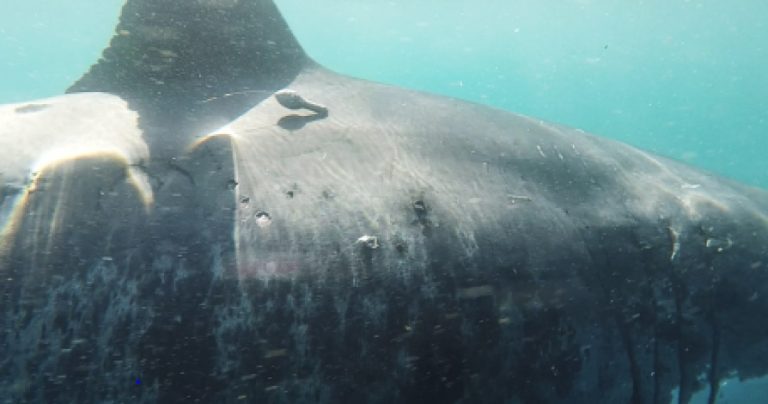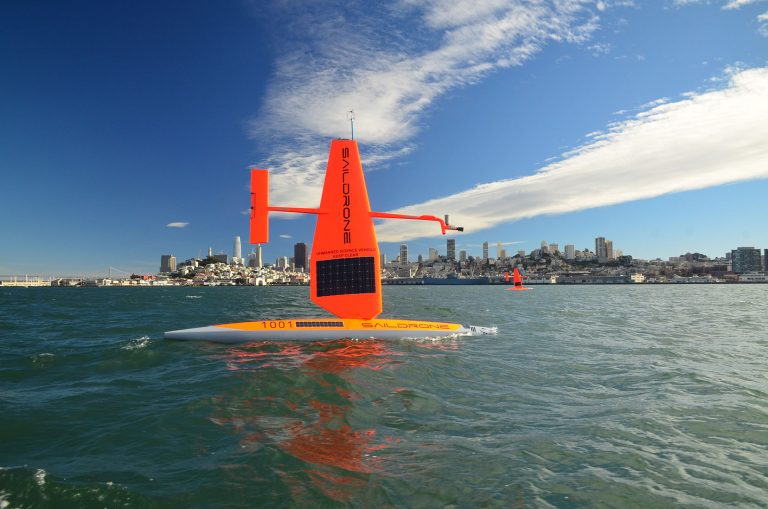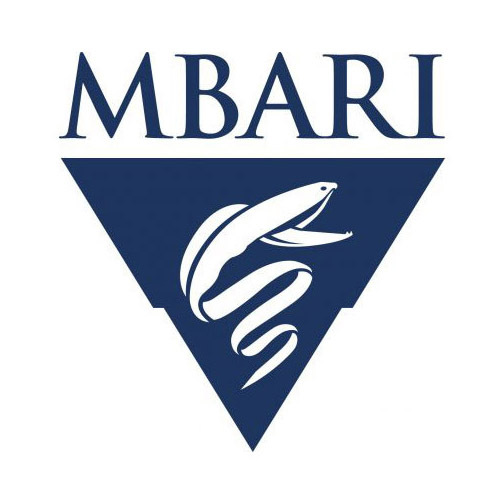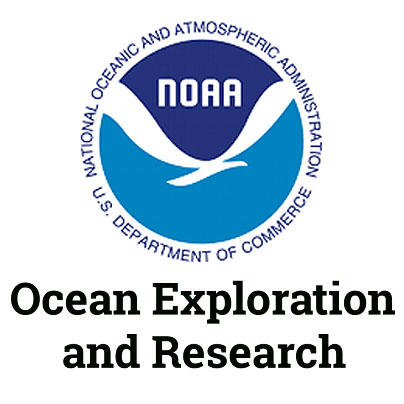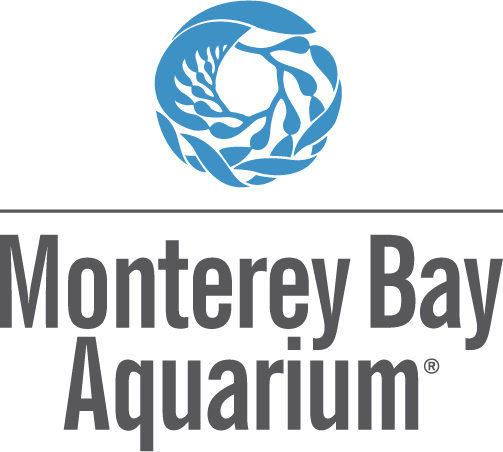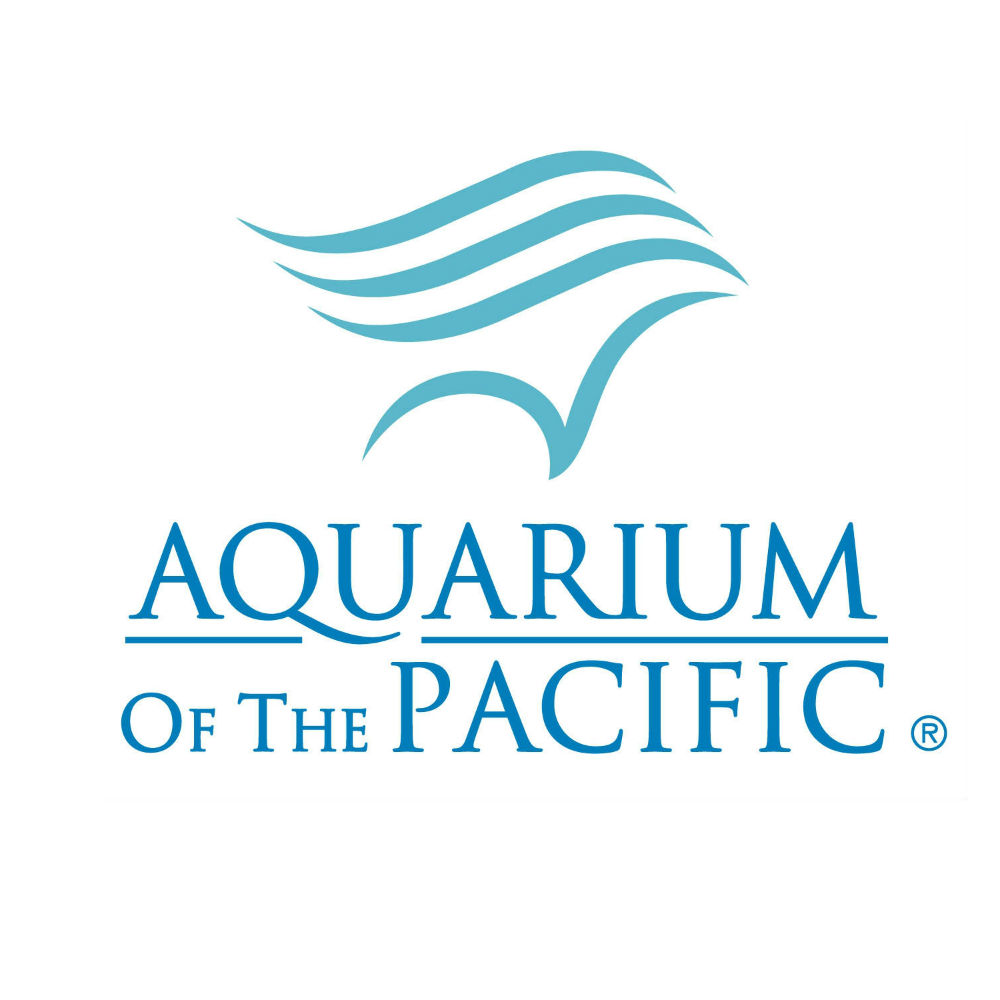The white shark is among the most iconic predators in the ocean. But for all their public exposure, the lives of white sharks remain shrouded in mystery. Their remarkable migrations and behaviors have come to light in the past decade, through the use of biologging tags. These sophisticated tags – think “wearables” for sharks – allow scientists to see beyond surface encounters or the brief interactions divers and fishermen have with white sharks. The tags allow researchers to follow the sharks as they journey, traveling thousands of miles into the open ocean, then returning each year to their coastal feeding grounds.
Principal Investigator Dr. Barbara Block and her team at Stanford University’s Hopkins Marine Station have been using electronic tags to track shark migrations for years. She and her colleagues from the Monterey Bay Aquarium have found that a large number of white sharks that forage each fall in the waters off California migrate annually to an open ocean region halfway between Hawaii and Baja. Fattened on a rich diet of seals and sea lions in the National Marine Sanctuaries along the central California coast, adult white sharks in winter and spring congregate in a patch of open ocean roughly the size of Colorado, known as the White Shark Café. Little is known about this remote sub-tropical environment and the behavior of sharks that convene there. Why would these large predators choose to leave the eastern Pacific’s coastal cornucopia for this remote oceanic desert?
Café for Feeding or Mating?
The tracking tags on white sharks have revealed unusual diving behaviors among the white sharks in their offshore home. The most notable change from the coastal forays to the deep sea is that the white sharks engage in “rapid oscillating diving patterns” or “bounce dives” when they reach the Café. These dives have V shapes: sharks dive at night to 100-200m depths and immediately return back up. In the daytime, these rapid diving movements include much deeper depths to 450 meters below the surface. Here the water can be quite cold and low in oxygen and the sharks only stay briefly. While the reasons for this unusual diving behavior are unclear, scientists have hypothesized that it could be related to the diversity and abundance of prey in this particular region. Or the dives potentially could be searching behavior – males seeking females in the clear, warm oceanic cafe waters.
Unknown Waters
While satellite data of the surface waters of the White Shark Cafe show characteristics of an oligotrophic (food-scarce) habitat, little is known about life at greater depths. Very few research cruises in human history have explored this region of the North Pacific. The current understanding of the abundance and distribution of the communities of deep water animals is incomplete at best. The Café occupies a very interesting region at the northeast edge of a large oceanographic structure called the “North Pacific Subtropical Gyre.” The sharks are swimming from the coast and entering the closest corner of the Gyre to North America. To the east lie waters influenced by the California Current, which carries cold, nutrient-rich water south along the US West Coast. To the south is a region of equatorial upwelling, which results in high ocean productivity. In the Café itself – think empty blue – we have almost no measurements of these biologically essential parameters. So the team simply does not have the measurements and observations to understand what that food source could be or why such a region would attract a large apex predator.
A Unique Combination of Tools
In April, a multidisciplinary team of oceanographers, marine ecologists, and molecular biologists will sail to the Café aboard the R/V Falkor with the objective of locating satellite and acoustic tagged white sharks and studying their surrounding oceanographic environment. Building a complete understanding of the sharks’ biology and their role in these offshore, open-ocean ecosystems requires learning why this area seems to be vital to the shark’s ecology. The expedition will bring a broad range of tools to the task. Leading the way to the Café are 37 white sharks fitted with satellite tags by Dr. Block and her team during the fall months preceding the cruise when the sharks are close to shore. Two types of tags were put on the white sharks – satellite and acoustic tags. The satellite tags are programmed to release during the April-May expedition, and will provide the location of the sharks via radio uplinks to satellite while the Falkor is on location in the Café. The scientific team will also be using some advanced research tools testing the concepts of how to conduct ocean observing in open ocean ecosystems. Two Saildrones, unmanned surface vehicles that “sail” on a fixed wing, are equipped with sophisticated acoustic instruments designed to locate plankton and midwater fish. They are also equipped with a passive listening sonar capable of receiving a signal from any of the more than 80 white sharks with active acoustic tags that have been attached to sharks over the past four years. The team will also use an autonomous underwater vehicle called a Slocum Glider, which will be equipped with listening devices for the acoustic tags. These robotic platforms left in late March and will arrive at the Café in early April to survey the region prior to the ships arrival. The drones will signal to the team where the sharks are gathering and will help direct the deployments of the Falkor’s ROV and other ‘listening buoys’ equipped with camera systems.
Ecosystem Monitoring in the 21st Century
The team will also be testing one of the revolutionary new technologies for ocean monitoring: environmental (or E-DNA) technology. As organisms swim through the environment, DNA is released and accumulates in the surrounding water. The team will be using real time molecular techniques to identify if white sharks have recently swum by. With this range of tools, the team will be able to assemble an extensive data set that describes the ocean in the Café in a comprehensive way. Data gathered by CTD casts from the Falkor (which measure salinity and temperature through the water column), the profiling Slocum Glider, and the shark satellite tags will be combined to produce a high-resolution picture of the physical structure of the upper ocean. Current sensors onboard the Falkor and the Saildrones will map ocean currents, while ROV dives and net tows will help paint a picture of the diversity of fish and invertebrates. Water collected with the rosette sampler will be analyzed for chlorophyll and nutrient concentrations – as well as photosynthetic activity – to gain an understanding of the underlying ocean productivity. From this, the team will piece together a comprehensive view of the sharks’ oceanic habitat. “By simultaneously studying the physical and chemical oceanography of the region, as well as observing the biodiversity while we know the white sharks are there, we can for the first time begin to assemble a picture of the role the White Shark Café plays in these animal’s life histories,” says Dr. Block. “This information is fundamental to knowing how to protect them in the high seas.”
Broad Implications
Conservation of large ecosystems in the high seas is not only critical to the protection of apex predators like white sharks, but for promoting overall environmental health across the globe. 40% of the ocean is open sea where natural resources abound and are the property of all nations. A 2016 UNESCO / IUCN report identified the White Shark Café as a potential World Heritage site, recognizing the unique importance of this region for white shark biology. To achieve and sustain this protected classification, a great deal more information is needed about the site and the sharks’ behavior in the region. The information collected during this expedition will help to define the biological oceanography of the White Shark Cafe and to achieve the ultimate goal of protecting this essential ecosystem from overexploitation.
Data & Publications
WhiteSharkCafe.org – A resource with real time updates and data, as well as glimpses behind-the-scenes and shark profiles.
The resulting shipboard dataset is being archived at Rolling Deck to Repository and is now available.
CTD, EventLogger Documentation, and Navigation data from ROV SuBastian and Navigation data from Falkor are available at MGDS.
Data from Saildrone is available here and and here, via ERRDAP.
Slocum Glider data is now available:
Post Calibration Analysis Report
This glider data is also available on MGDS.
Raw environmental DNA data sequences are available at NCBI.
Data from the tagged white sharks is part of the gTOPP database.
ADCP data is curated and archived by University of Hawaii.
- , , . (2019). A rapid environmental DNA method for detecting white sharks in the open ocean. Methods Ecol Evol. 10: 1128– 1135. https://doi.org/10.1111/2041-210X.13201.
In the News
Stanford and Monterey Bay Aquarium Researchers Go Deep to Study White Shark Population
NBC Bay Area • Feb 20th, 2018
Collaborations bring distant study sites into reach
MBARI 2017 Annual Report • April 18th, 2018
Unique Science Expedition Leading to Possible Protection of the White Shark Café Embarks this Week
Chicago Evening Post • April 18th, 2018
Scientists Embark on an Expedition to Reveal Secrets of the White Shark Café
ECO Magazine • April 24th, 2018
A Voyage to the White Shark Cafe to Find Out What’s on the Menu
Oceans Deeply • April 25th, 2018
Uncovering The Mystery Behind The ‘Burning Man’ Of Great Whites
Pacific Standard • May 2nd, 2018
Shark Tracking in the Pacific
Saildrone • May 2018
In other news: Environmental stories from around the web
Mongabay • May 4th, 2018
This Armada of Saildrones Could Conquer the Ocean
Bloomberg Businessweek • May 14th, 2018
Aquarium Visitors Get Look Into Shark Café
Grunion Gazette • May 14th, 2018
The Robots Roaming the High Seas (Video)
Bloomberg Hello World • May 14th, 2018
White Shark Café: Panel Discussion & Live Broadcast
The Aspen Institute • May 15th, 2018
A Step Towards A Quantified Planet
Medium • May 15th, 2018
Saildrone Scales Up With $60M Funding to Help Save The Oceans
DroneBelow • May 16th, 2018
Voyage to the White Shark Café
Ocean Explorer • May 16th, 2018
A White Shark Cafe sits 1,200 miles offshore. Here’s why scientists spent a month there
San Luis Obispo Tribune • May 21st, 2018
Meet the Crew Tracking Great White Sharks to Solve an Ecological Mystery
The Aspen Institute • May 21st, 2018
What’s the Shark Equivalent of Burning Man?
Stanford • May 21st, 2018
Hundreds of great white sharks are congregating in the Pacific and researchers don’t know why
Quartz • May 21st, 2018
Elephant seals don’t have many predators — but the ones they do attack from the deep
San Luis Obispo Tribune • May 22st, 2018
Great White Sharks Have A Secret ‘Cafe,’ And They Led Scientists Right To It
National Public Radio • May 28th, 2018
Great White Sharks Have A Secret ‘Cafe,’ And They Led Scientists Right To It
Brinkwire • May 28th, 2018
Great white sharks have a secret ‘cafe,’ and they led scientists right to it
MPR • May 28th, 2018
The Closer – Morning Report
The Hill • May 29th, 2018
Scientists Voyage to the White Shark Cafe
Benzinga • June 1st, 2018
Great White Shark ‘Cafe’ Discovered By Scientists Thousands Of Miles Off Baja California
The Daily Catch • June 1st, 2018
Scientists Voyage to the White Shark Cafe
Virtual Strategy Magazine • June 1st, 2018
Scientists conclude expedition to find out why sharks go to the White Shark Cafe
KHON • June 1st, 2018
MBARI researchers describe abundant marine life at ‘White Shark Cafe’
KSBW • June 15th, 2018
Researchers describe abundant marine life at the ‘White Shark Café’
PHYS.org • June 15th, 2018
There’s A White Shark Cafe In The Middle Of The Pacific | Shark News
Discovery • July 18th, 2018
Mysterious great white shark lair discovered in Pacific Ocean
San Francisco Chronicle • September 16th, 2018
Exploring the Mysterious World of the White Shark
Monterey Bay Aquarium • Fall 2018
Exploring the Mysterious World of the White Shark
Shorelines – Monterey Bay Aquarium • Fall 2018
The White Shark Café
BYU Radio • February 28th, 2019

